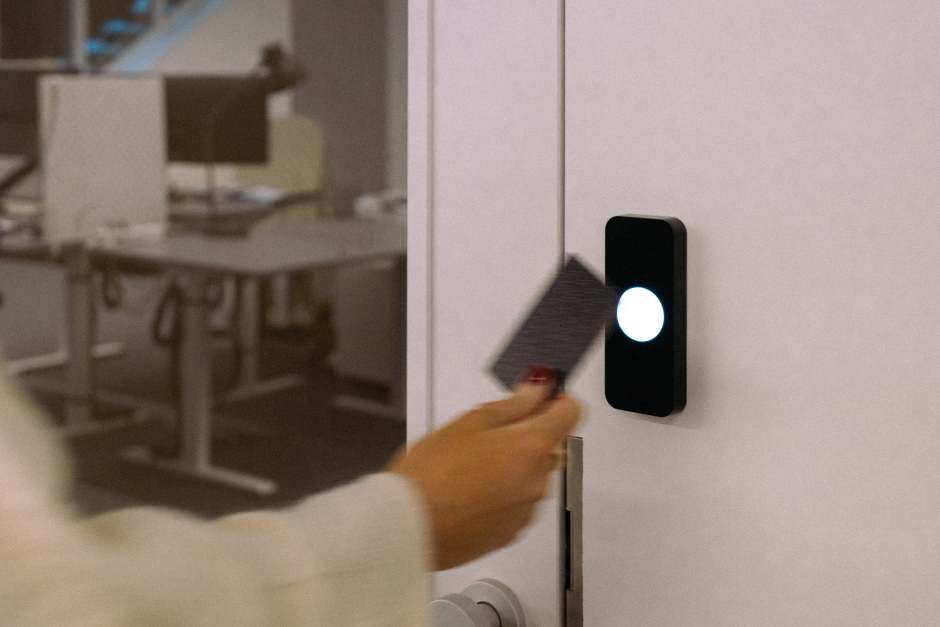Modern workplaces have faced some tumultuous times since COVID-19, switching abruptly to remote work, navigating hybrid work models, and adjusting to new employee expectations and needs. Return to office (RTO) policies are gaining traction, but the new trend of coffee badging shows how employees continue to find loopholes so they can work from home.
Spending time in the office is important to employee collaboration, morale, and productivity. However, an uneven or unplanned approach to RTO mandates will create problems rather than solve them. Coffee badging is one example of how a poorly executed policy can create roadblocks within your organization.
In this article, you’ll learn the meaning of coffee badging and explore how it affects hybrid businesses. We’ll also share effective strategies for creating a workplace that’s resistant to coffee badging.
What is coffee badging? #
Coffee badging is a recent phenomenon that emerged when organizations began requiring workers to come back to the office full-time. It occurs when an employee comes in to work just long enough to swipe their badge and drink a coffee, before leaving again to work remotely.

The origins of coffee badging #
Coffee badging became common in 2022 and 2023, as many businesses issued RTO orders after allowing employees to work from home during the COVID-19 pandemic. While some companies implemented full in-office mandates, others developed hybrid policies requiring employees to work from the office for a certain number of days or hours each week.
Many workers have struggled with this transition because they enjoyed the flexibility of their previous schedules, find it difficult to juggle childcare or family responsibilities while working on-site full-time, or feel they’re more productive away from the office. As a result, they’ve looked for ways to get around in-office requirements so they can work from home more frequently.
Why coffee badging is a problem #
On the surface, coffee badging seems like a minor concern, but it can cause serious setbacks for companies investing in workplace presence, culture, and collaboration. When employees only come into the office for a few minutes before slipping back out again, they miss out on meaningful interactions and spontaneous conversations with their coworkers.
Coffee badging also makes it more difficult to collaborate and build a strong workplace culture. Employees who are adhering to the RTO mandate may become resentful of those who are spending as little time on-site as possible. These feelings can ultimately result in a negative atmosphere where employees feel undervalued and lack respect for the rest of the team.

Causes of the coffee badging trend #
Workplace phenomena, such as coffee badging and quiet quitting, tend to reflect a deeper issue affecting employees across multiple industries. In the case of coffee badging, the disconnect between RTO efforts and employee mindsets is often to blame.
These are some of the specific reasons coffee badging has become so common in recent years:
- HR policy gaps: RTO rules can work if they’re implemented carefully and thoughtfully. However, some organizations put them into place without establishing how they will monitor employee attendance and respond to issues like coffee badging.
- Misaligned return-to-office mandates: Coffee badging is more likely if an organization doesn’t take employees’ needs and preferences into account before requiring them to return to the office. Workers may think the policies are unjustified because they can do their jobs equally or more effectively at home.
- Insufficient access data: A lack of awareness makes any company vulnerable to coffee badging. If employees know that leadership doesn’t have an access system in place or they don’t look closely at who enters the building and how long they stay, they’ll feel more confident about their ability to outsmart the system.
- Employee expenses: Financial savings are one of the biggest advantages of remote work, especially for employees who have children or care for other family members. Coffee badging allows them to save money by reducing the number of hours they spend away from home.
- Lack of trust: Some employees interpret RTO mandates as a sign company leadership doesn’t trust them, and those negative perceptions affect their morale. A hybrid workplace model with on-site requirements won’t work if employees think you’re trying to spy on or micromanage them.
Addressing these issues often means taking a closer look at the interactions between your organization’s leadership and employees and examining how your policies affect them. While that analysis is underway, you can also use technology to help prevent coffee badging.

How companies are responding to coffee badging #
Concerns about coffee badging are widespread, and companies have taken a variety of steps to resolve them. The first step is to ensure they’re using the right workplace model and determine if it falls in line with industry expectations. With RTO policies and increasing property costs, many organizations are now paying closer attention to office occupancy data. This information helps them better understand what model is most appropriate.
Companies have also begun using stronger monitoring measures. In 2024, 70% of workers who attempted coffee badging were caught by their employers. This is in large part because of better monitoring—46% of employees say their companies have increased their use of employee tracking software in the past year.
Coffee badging is also an issue within government offices. In the United States, government agencies like the Environmental Protection Agency (EPA) began tracking employee badge swipes, laptop logins, and other data to determine if employees are working from the office when required.
Practical coffee badging solutions #
Passive badge swipes are a go-to method for many organizations hoping to track employee attendance. However, those swipes alone don’t offer enough information to ensure employees aren’t coffee badging, and additional technologies or tools are usually necessary.
The problem with passive badge swipes #
The primary limitation of passive badge swipes is that they only track an employee’s entry and don’t give any indication of how long they stayed on the premises. As a result, people can swipe their badges and leave within a few minutes while giving the impression they put in a full day of work at the office. They also don’t indicate what the employee did while they were on-site, including whether they went to their desk, accessed a meeting room, or logged onto a device.

Preventing coffee badging with modern access control #
A more comprehensive access control system, such as Kisi, enables greater transparency and fairness in hybrid workplace policies. Kisi has several advantages as a visibility and access control platform, including:
- Time tracking: Time tracking reports show you an employee’s first unlock, last unlock, and time onsite. Installing readers for in-and-out tracking on both sides of the door means employees will have to scan their credentials before leaving, so you’ll know if they only stopped by the office for a cup of coffee.
- Audit trails and entry logs: You can generate reports and workplace data analytics with details of all the access events on your property, such as when doors are unlocked and when they’re held open. These logs allow you to track employee activity over time, so you can determine whether they’re consistently reporting to the office on their required days.
- Zone-based access control: With Kisi, you can require employees to swipe their badges to enter different areas within the building. This means you can track their activity throughout the day, such as when they enter meeting rooms or offices.
- Analytics and reports: Analytics on space usage give a more complete picture of workplace activity. Reports like Kisi’s Space Activity Hub, showing peak usage hours, traffic trends, and room occupancy help organizations understand whether employees are genuinely using the office or just stopping by briefly.
- Primary device restriction: When setting up Kisi, you can require employees to use a primary device to access the building. This makes activities like coffee badging and buddy punching more difficult.
When you implement access control to minimize the risk of coffee badging, keep in mind that the goal is to build a more positive environment. An effective access control system not only benefits your organization but also your employees, who will have a faster, more convenient, and safer experience when they come to the office.
Other ways to create a coffee-badging-resistant workplace #
Requiring employees to come back to the office for a set number of hours each week sounds simple in theory. However, it can be difficult to enforce, particularly if your team tends to work independently or on varied schedules.
Following these best practices will help minimize incidences of coffee badging in your workplace:
- Define presence expectations: Be clear about what you expect from employees in terms of the specific days and time they spend in the office each week. Detail your requirements in your policies and explain what role technology will play in tracking their presence.
- Communicate policies openly: Employees sometimes assume that companies are unaware of trends like coffee badging. Share policies in writing and verbally so they know gaming the system won’t be worth their while.
- Use access logs: Get more accurate workplace insights by generating and analyzing access logs. They’ll show you exactly who was on site and how long they stayed, so you can look for patterns of attendance issues.
- Offer flexibility: Employees are more likely to adhere to attendance policies if you’re open to working with them on a schedule that works best for their circumstances. At the same time, discourage performative attendance and remind them of the genuine value of working on-site, such as having more opportunities to collaborate or brainstorm.
- Model good attendance behaviors: Employees will likely be more resistant to RTO policies if they see that company leaders are rarely in the office. Make sure workers at every level are regularly present and interacting with one another.
When combined with the right technologies, these steps can help create an office employees want to work from and eliminate their interest in coffee badging.

Cut back on coffee badging with Kisi #
Coffee badging is often a symptom of a larger problem. It could indicate that employees don’t see the point in going to the office, that they’re unhappy with how you put your RTO requirements into place, or that they feel unappreciated by management. These are issues you can only resolve gradually as you build trust within your team.
In the meantime, you can help make your office more productive and collaborative for everyone with an access control platform like Kisi. With Kisi, you can hold employees accountable and enforce your attendance requirements without making them feel uncomfortable, invading their privacy, or causing operational headaches.
Reach out to the Kisi team to learn more about how our solutions support hybrid work security and can help put an end to coffee badging and other access issues.

Vera Eftimovska
Marketing Campaign Manager at Kisi, blends her psychology background with hands-on experience in access control and workplace security. Passionate about how technology and human behavior intersect, she shares insights that help businesses build resilient, future-ready, and security-driven workplaces.



